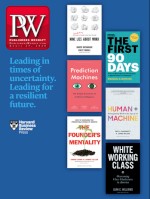Given all the disruptions to the global economy caused by the new coronavirus, unit sales of print books held up relatively well in the first quarter of 2020, said Kristen McLean, executive director, business development for NPD Books, in a webinar held last week. And though the unprecedented economic plunge makes it difficult to gauge how much of a drag Covid-19 will have on book sales in the long run, publishing has weathered previous turbulent times fairly well. During the Great Recession and its aftermath, McLean noted, unit sales fell meaningfully in only one year—2009, when unemployment was peaking—and units rose from 760 million in 2007 to 807 million in 2012. She added that the gains included the addition of e-books, and that between 2013 and 2019, unit sales generally remained flat.
While demand for books has historically been steady, McLean said, buying patterns have changed as a result of the pandemic. Between March 1 and April 4, demand spiked in such categories as outdoor skills (with print units up 74% over last year); medical history, including books on the 1918 flu pandemic (up 71%); games and activities (up 42%); and literary fiction (up 10%).
Print unit sales in the juvenile nonfiction and fiction segments are up for March 1–April 4 over the comparable period in 2019, with juvenile nonfiction having done particularly well. “The Covid period is all about juvenile books,” McLean noted. Some trends in those segments in late 2019 have been accelerated by the pandemic, and she pointed to one area that has seen big gains since children were forced to stay home: school readiness. Between March 1 and April 4, unit sales in the activities segment (which includes coloring and sticker books) rose 32%; the study aids segment (early learner and middle school math and science titles) rose 83%; and sales of language arts books for young readers (ages four to eight) jumped 98%.
The pandemic has changed where people buy books, with print sales at online retailers growing since March 1 and sales at physical retailers declining. Covid-19 has also had a marked impact on the largest book-buying metropolitan areas. Between March 1 and April 11, unit sales in the New York City region, the area hit the hardest by the outbreak, fell 16.5% from the similar period last year, according to NPD BookScan, and units were down 5.2% for the year to date. The San Francisco Bay Area also had a large year-to-date decline, with unit sales off 4.3%, allowing the Chicago region to ease past the Bay Area to become the third-largest book-buying region, at least temporarily. Seattle-Tacoma had the biggest unit gains among the top 10 largest metropolitan areas for the year to date, with units up 2.4%.
When the pandemic eases, McLean said NPD expects to see two major trends: saturation and acceleration. Publishers will release lots of content that will make it difficult for them to gain attention for their titles. And ongoing business changes will be sped up, including the restructuring of retail—and “not in a good way,” McLean noted. In the end, she added, how publishing performs after the lockdowns end will be determined by three factors: the stability of the supply chain, the length and depth of the unemployment crisis, and the health of each business before the pandemic set in.



 Volume 267
Issue 17
04/27/2020
Volume 267
Issue 17
04/27/2020





